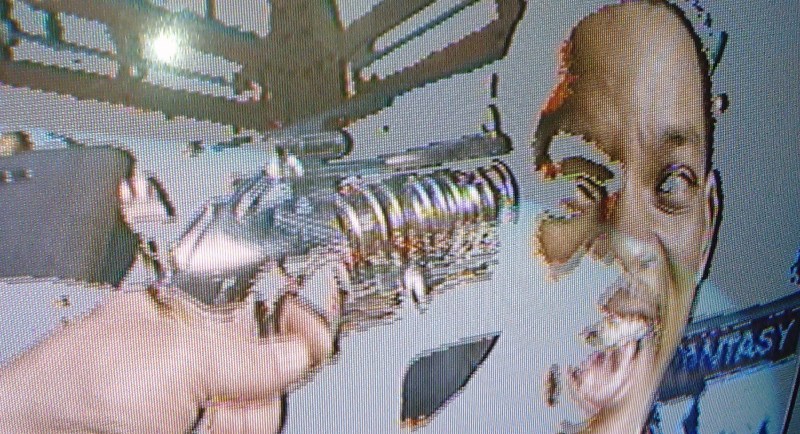Back in the ’70s and ’80s, before we had computers that could do this sort of thing, there were fully analog video effects. These effects could posterize or invert the colors of a video signal, but for the best example of what these machines could do just go find some old music videos from Top of The Pops or Beat Club. Stuff gets weird, man. Unfortunately, all those analog broadcasting studios ended up in storage a few years ago, so if you want some sweet analog effects, you’re going to have to build your own. That’s exactly what [Julien]’s Video Mangler does. It rips up NTSC and PAL signals, does some weird crazy effects, and spits it right back out.
The inspiration for this build comes from an old ’80s magazine project called the ‘video palette’ that had a few circuits that blurred the image, turned everything negative, and could, if you were clever enough, become the basis for a chroma key. You can have a lot of fun when you split a video signal into its component parts, but for more lo-finess [Julien] is adding a microcontroller and a 12-bit DAC to generate signals that can be mixed in with the video signals. Yes, all of this can still be made now, even though analog TV died a decade ago.
The current status of this project is a big ‘ol board with lots of obscure chips, and as with everything that can be described as circuit bending, there’s going to be a big panel with lots of dials and switches, probably stuffed into a laser-cut enclosure. There’s a mic input for blurring the TV with audio, and enough video effects to make any grizzled broadcast engineer happy.

















Interesting, but video these days is pretty much all in the digital domain, so FPGA systems with HDMI in/out are going to be more useful.
This has its place for art I think
Oh that takes me way back to the early ’70s and all the attempts to create video synthesizers. https://en.wikipedia.org/wiki/Sandin_Image_Processor
https://en.wikipedia.org/wiki/Rutt/Etra_Video_Synthesizer
Scanimate is the coolest I think: https://www.youtube.com/watch?v=0wxc3mKqKTk
When is someone going to clone Scanimate into a lunchbox (or smaller) sized package?
Years ago I picked up a video box that has 8 knobs for correction when dubbing. It is a lot of fun with live video. I bent the video with audio into any one of the 4 white and colors. All of the little knobs are 0 to 5 volt effected. It would be nice to use joysticks to better manipulate video in the live setting. When doing camera-monitor feedback this truly is a fractal like palate of patterns that include a moving rose window effect by rotation of the camera in a special mount. Since this done live the “sync” is a performance not an audio diode peaking “beat tracking” crap disco light effect.
NTSC is great to mess with, because most monitors accept NTSC video that is __far__ from ideal (because there was so much deviation from the ideal, and the typical analog circuits weren’t very picky either).
Notably, the colour burst doesn’t have to be a sine wave, so even a simple 8-bit PIC can output colour video with a trivial discrete resistor DAC (bit-banging USB is far more complex, but also commonly done).
‘Never Twice Same Colour’ was more than just a meme.
I remember doing really bad NTSC video digitizing on a C64, using a really primitive ADC based upon the built-in counter exposed on one of the expansion ports. Grainy as heck, but the images were recognizable. [A few may even remember my 2MB REU mod, later cloned and commercialized by others, or the other C64 projects I published.]
I wonder if this could be modified to do time base correction?